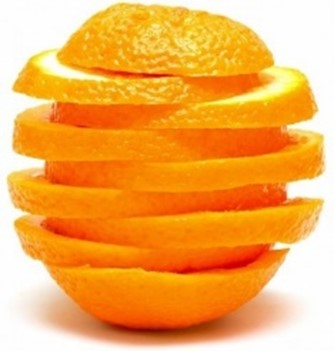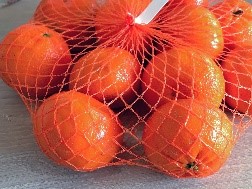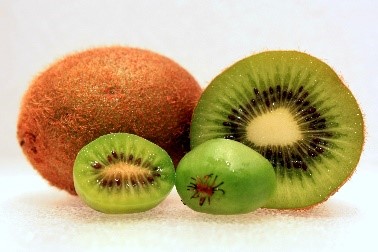Winter Fruits: Let us explore the global markets.
The winter with cold and short days has its glory. Just look at the assortment of colour of natural products, it bears; be it the grape fruit in pink, lemons in yellow, tangerine in orange, kiwis in green; to quote a few examples. These fruits contain natural remedies for dryness associated with climate, infuse moisture into: your internal body organs, skin and hair. Its no wonder to say winter fruits keep check adjust nutrition balance to food festivities or winter delights ‘broiled meat, spiked que or hot sauce.
A glimpse into basket of notable winter fruits
- Lemon
- Pears
- Kiwi Fruit
- Apple
- Orange
- Tangerine
- Mandarin
- Clementine
- Satsuma
- Cranberry
- Grape Fruit
- Lime
- Persimmon
- Kumquat
- Quince
- Passion Fruit
- Custard Apple
Apple, {HS Code 08081000}a fruit for all ages, highly delectable and sans frontieres, is basically an Autumn treat, spread up to spring and available through out the year ,in all parts of globe. Who haven’t heard” an apple a day keeps diseases away”? Perfect choice for kids’ school snack bag. A kid running for school and an office goer briskly walking early morning nibbling an apple to make up for missed breakfast is routine scene on roads. The fruit once originated from Asia is now on top of taste preferences in Americas, Europe and elsewhere. Eat it raw, drink the juice, alternatively, bake or cook for making apple pie, butter or sauces, jams, marmalades, crumble, crisp or cakes.

This fruit; well nutrient, keeps in store enormous health benefits and has mythological presence in certain religious and cultural events as well. This fruit exists from thousands of years .The likely origin from countires now known as CIS probably from Kazakhistan of Kyrgyzstan from where it travelled to Europe and then to North America.Cider from sour apple of those olden days hasd multiple commercial uses.
Trade. Such a heavily traded fruit. Gotten huge imports globally: US $ 8.08 billion. Three colossal imports were into Germany, Russian Federation and UK equivalent to half a billion or more. Various types and kinds of apples reached its destinations in all continents. The big Asia, countries located in its East, West, Centre, South, SE were the recipients.. The quantum was though, high in Europe. Mexico, Columbia, Brazil in Latin America, Egypt, Angola, Ghana in Africa, were notable importers. The data doesn’t show Aus. & NZ for reasons. Apple remained on import bill of almost all small islands in Carribean, Pacific or elsewhere. This geographical dense popularity is making growers happy and buyers equally happy. The average Market Price of standard apple remained at $ 1.74/kg as on 30-12-2019 as per ITCN. News Update. A cosmic crisp apple cross between enterprise and honey crisp likely to last for one year long, when refrigerated, is going hit US groceries soon
Trade data is extracted from Universal Harmonized System (HS Code) up to 6-digits. This article doesn’t contain data beyond 6-digits which require in-depth study into customs nomenclatures of individual countries, not under scope of current subject.
CITRUS Fruits Citrus are reservoir of supplements: Vitamin-C, B, Potassium, Magnesium, Copper, Phosphorus and so on. It’s a must include in your daily take in, if you want a good immune system and dream for a shinny skin and healthy hair. Europeans adore citrus and paid import bill of around $ 7 billion during 2018. That’s astonishing figure. Extractions are commonly used in fragrances and liquors

Orange, {HS Code 080510} A mouth-watering fruit, yellow to bright orange in colour. Everyone wants to grab an orange as a snack between meals and on formal dinners or buffets. So succulent! So, go for it. The impact is great, soothing and pacifying. It wouldn’t be wrong to suggest that a mouthful of orange will reduce your stress level and make you feel light hearted.
Malay-Archipelago is believed to be its origin, from where it reached India, East coast of Africa, further to Mediterranean and subsequently crossed borders. This oblique or spherical fruit got adapted to all kinds of soil or indigenous climatic conditions. Now one of most sought-after fruit globally. Common orange variety is named Bahia ,Lima in Brazil and Uruguay, Bali in Indonesia, Belladona in Italy, Berna, carlvalhal , Macetera in Spain, Biondo Comune in Mediterranean, Bionda Riccio in Italy, Byeonggyul in South Korea, seedless Cadanera in North Africa or Maghreb states, carlvalhal in Portugal, Charmute in Brazil, Cherry orange and fakuhara in Japan, Dom Jao in Brazil, Gardner and Homosassa , Midsweet in USA, Jincheng in China, Khettmali in Isreal and Lebanon, Malta/ Kinnow in Pakistan, Narinja inn India.
Global trade. Orange fetched global imports worth US $ 5.96 billion in 2018. France, China, and Germany with around half billion were key players. European countries contribution was astonishing $ 2.63 billion. Further significant markets were Canada, South Africa, Malaysia, Oman, Australia, Brazil, Kenya, etc. Market Price on average was $ 2.01/kg on 30-12-2109 compared to $ 1.79 /kg on 27-12-2019. Upward trend has been noted with Winter season becoming colder and grey.

Tangerine (HS Code 080521) The fruit originated from Tangier, Morocco belongs to citrus family. Orange in colour, however, smaller , flattened on sides and bit heavy. Its clubbed together with mandarin, satsuma and similar hybrid fruits for trade assessments. Its origin is believed to be SE Asia from where it travelled with some cultivator to Mediterranean. Its mostly eaten raw and used in salads, desserts or made fresh or frozen juice concentrates.
Trade. Cumulative imports for Mandarin, Tangerine, Clementine and Satsuma and similar other citrus hybrids were recorded at US $ 4.89 billion. Key importing markets were Russian Federation, USA, Germany, France, UK, Canada. Demand in Africa or Latin America is limited. Market Price Its average market price was recorded at $ 1.58/kg. News update Georgia shipped 60% of tangerine harvest to Russia in 2019.

Clementine (HS CODE 080522) Interestingly, this fruit surfaced on global market in recent years and rapidly imports ran in to billion. This easy peeler, hybrid orange colour fruit is known to have Algerian origin, resists to hot climate and is favorable for cultivation in North Africa, Mediterranean and California. Available, both with or without seeds.


Mandarin. Demand is constantly on rise for this fruit which is especially favorite with kids as school snack due its tiny size and easy peel off. Fruit is oblate and tender suitable for fresh use. this fruit along with its family fruits are decorated, given as gifts considered as symbol of good fortune

Satsuma. The fruit with loose skin and less citrus but sweet flavor is of Japanese origin named after province Satsuma now called Kagoshima Prefecture. Its cultivated seedless and very popular for Christmas, tradition is that arrival of Satsuma shipment in USA is sign of start of holiday season. Satsuma Market Price was determined in South Africa Cape Town Market at $0.76/kg. The market is now gradually shifting from southern hemisphere to northern hemisphere.

Grape Fruit (HS- Code 080540)Grape fruit belongs to citrus fruits family. It’s a large fruit sour to semi sweet, yellow orange skinned., generally in oblate spheroid in shape contains white, pink and red pulp, however redder are the sweetest. It grows on long trees normally 5/6 metres tall. Grape fruit was originally produced in Barbados, an eastern Caribbean Island, due to crossbred of sweet orange and Pomelo and was called “forbidden fruit “or smaller “Shaddock” however upon commercial cultivation, it was named as so. In Spain its called “Toronja then travelled to America and later to Jamaica, Trinidad. Brazil, South America and Isreal. Eat it raw, oil is extracted from peel, seeds as medicine. Its used to treat asthma, high cholesterol, cancer and many other conditions, however drug interaction with grape fruit has been established as harmful. Fruit is source of Vitamin-c, fibre, Potassium, pectin and other nutrients.
Trade global imports were US $ 1.09 billion during 2018.Major importers were Netherlands, Russian Federation, China, Japan, France. Other notable markets were Almost all European, Canada, Saudi Arabia, Singapore, Slovakia, Argentina, Chile and certain African countries. Market Price US $ 3.37/kg as on 27-12-29018.

Lemon {HS Code080550} Lemon, the yellow, tiny, sour oval shaped fruit is itself a wonderland. Use the fruit in a thousand ways and it will prove utility in every manner. A kitchen must have item. All parts of the fruit are consumed including pulp, rind, peel and even leaves. It is aromatic, juicy and acid. Equally effective is for industrial use at par with culinary purpose. Lemon juice is used in drinks, lemonade, tart, pie, desserts as well as for marinating meat in almost all Chinese, Japanese, Korean, continental dishes. Pulp and Rind are used in cooking and baking. lemon is used to tender the meat. Lemon juice is an essential food preservative. Lemon are perfect cleansing agents. Its astringent flavor is charismatic. Lemon peel oil has multiple uses. Iraq, Egypt, Spain, China. Its medicinal uses were common on ancient ships as safeguard against fungus. Lemon has been known to come from Spain and North Africa .Normally grown in orchards.

Lime. This fruit is more sour, small, round and green. Lime are used to give taste to drinks and food.
Trade. Lemon and Lime fall under same 6 digits HS, however, lime adopts a separate classification under 8 digits coding done for tariff applications. Both fruits enjoy heavy demands globally and cumulative imports was US $ 4.03 billion in 2018 showing major shipping destinations in USA, Germany, Netherlands, France and UK. Other prominent markets were Russian Federation, almost all Europe, UAE, China, and almost all Asian countries, Chile, Australia &NZ, Mexico, Brazil, Uruguay, Namibia and Kenya. Market Price was noted as $ 1.84 /kg for lemon as on 30-12-2019.Update First lemon nursery opened in Jalal a bad ,Kyrgyzstan. Lime price was noted at $ 1.63 kg on same date.

Kumquat (HS Code -080590)Its a bite size fruit, size of a lemon. Least exotic on citrus and is native to South Asia and Asia Pacific. its raw rind is sweet, flesh acidic, sour like lemon. its branches are used for Christmas decoration. This bright yellow fruit is 2.5 cm in diameter with mildly acid juicy pulp and sweet edible pulpy skin. Most recent Market Price has been recorded at US $ 14.44 per kg.
Cranberries {HS Code -081040}Relatively hard-skinned red fruit is grown in clusters on shrubs is round, oblong or pear shaped. Not suitable for raw eat. Popular uses are for making beverages, pie, sauce, dried and tradition meal on Thanks giving or Christmas. The fruit is native to North America which is its major production base along with Chile. This fruit is small, round, red which tastes sour sometimes bitter. It’s a great news that there are only 5 fruits native to North America and cranberry is one of them. his fruit came from North America where it was mixed with meat or potatoes to make famous dish “Pemmican” Mostly used in making juice. Its became part of holiday culture.

Christmas must on table along with roasted Turkey and cranberyy stuffed sausage rolls.Its sauce is associated with thanks giving dinners American sailors of olden times craved cranberry to remain safe from scurvy. Cranberries are used as juice and sauce and dried and sweetened. Cranberry grows in shrubs which has small dark green leaves pink flowers and dark red fruit.
Trade. This fruit has a huge import bill of US $ 3.42 billion mostly imported by USA, UK, Netherlands, Germany, Canada with some reasonable consumption in Central, Far East and SE Asian countries. Very limited in Africa and Latin America. Market Price: Average price quoted at $ 3.78/kg. Fruit updates. This Christmas turkey lasagne and cranberry stuffing sausages rolls were on go. New Cranberry orange frozen yogurt has been marketed.

Pear (HS Code- 080830)The fruit has a round body with a neck and are found in multiple colors shades of green, red, yellow, gold and brown. Pear is mild, sweet rich in anti-oxidants and dietary fibers, vitamin-C, K and copper. It’s a natural scrub, a pear a day to stay away from ageing. Has its prehistoric known origin in Western Europe and North Africa. Human consumption includes as edible fruit, making juices and for cooking and baking uses, for making jams marmalades. On industrial uses, pear wood is considered valuable furniture and woodwind instruments as well as for wood carving and aromatic smoke. Pear wood is safely used to produce spoons, scoops and stirrers. Also used for brush backs, umbrella handles, musical instruments fingerboard and, decorative veneering, Good for providing fibers, in weight loss, for treating diabetes. Worth mentioning that Pears originated from Asia and Europe at same time i: e 1000 BC. Gradually spread to continents of North America, Africa and Latin America. Concludes that Pear is all landmasses fruit.
Trade. Global imports were recorded at US $ 2.70 billion in 2018.Major markets were Indonesia, Germany, Russia, UDA, Brazil. Others included Belarus, Canada, Thailand, Lithonia, Morocco, Vietnam, India, Peru, Ecuador, Senegal. Market price .US $ 0.87/kg

Kiwi Fruit (HS Code-081050) When we talk of Kiwi fruit, New Zealand comes to mind, but this fruit actually belong to China, known as Chinese Gooseberry, grew on wild bush and picked up for medicinal use. Later, somehow travelled, or tale is that by a teacher to NZ where it was welcomed as edible berry fruit and named Kiwi after their national bird. Thin, fibrous, light brown skin and green and golden flesh with tiny rows of edible black seeds. British and American servicemen liked the taste which encouraged its commercial cultivation. Noticing the fruit popularity in west, NZ promoted and marketed the fruit in Western countries under brand name gold Zespri.The new cultivation grounds gradually came up: Italy and Chile. Hence the fruit now found soil on 4 continents: Asia, Australia& NZ, Europe and Latin America. Fruit is rich in many nutrients, Vitamin-C, Vitamin -E, anti oxidants, and fibre also potassium which acts as beta blocker. Many European countries have made it key agricultural commodity and now grown in Italy, Belgium, Greece , apart from Chile. But NZ still dominates. New development is that NZ has marketed new Red Zespri
Trade. Kiwi Fruit captured global markets 2018 worth US $ 3.22 billion. Isn’t that huge? Major importers were China, Japan, Belgium, Germany, Spain. Other notable markets were USA, other European countries, Russian Federation, South Korea, ASEAN, Middle East countries and Latin American countries. Market Price: Average at $ 3.2 /kg, lowest at $ 2.39/kg and highest at $4.19/kg. looks like Chile and NZ sell high.

Persimmon (HS Code 081070) This fruit has deep red undertone, round, plump and glossy skin and look like flattened tomatoes. Its edible fruit native to Far East countries; China (Shizi), Japan (kaki)and Korea. Asian and Japanese \persimmon is the best sweet, slightly tangy with fibrous texture. Travelled to India, Nepal and USA Its interesting that on its trees, male and female flowers are grown separately. There are two types; astringent and non astringent.
Fruit is known for 1000 years for being delicious with beautiful wood. Eaten fresh, dries or cooked and is used in jellies, drinks, curries and pudding, fully loaded with anti oxidant.
Trade. Global market US $ 490 millions or less than half billion. Major importers are Russian federation, Germany, France, Belarus, Italy. Other notables are Europe and Asia very negligible market in Latin America and Africa. Market Price As on 30-12-201, it was sold at $ 2.36/kg showing an increasing trend. News Update. This fruit has become Azerbaijan’s main non-oil export.

Quince (HS Code 080840) This fruit has an extended family of apples and pears. The bright golden fruit is native to Central Asia Northern Iran and Turkey. The fruit when cut has fast oxidation process. This pear-shaped fruit is small, rounded pome fruit. Raw form is hard therefore, its cooked.
Trade It has market for 24.98 million with markets in Russian Federation, Germany, Romania, Netherlands, Austria and France.

Passion fruit (HS Code 08109090) Passion fruit is combination of three colour full species ; Yellow passion fruit, purple passion fruit, giant granadilla passion fruit, may be green as well, round or oval and juicy. For trade purposes , this fruit has combined nomenclateur with many other fruits. Peru in South America has large cultivation of this fruit. Market Price. Fruit was sold at $ 2.22/kg as on 27-12-2019.

Custard apple (HS Code 08109040) The fruit is brown or yellowish and irregular spherical in shape carrying different kinds of reticulation on its skin. Fruit has good taste similar to custard. Its native to island of Timor of Indonesia. Trade . The fruit is bracjketed with passion fruit for trade HS.

Winter Squash (HS Code 070993)
It’s a combination of several species of the fruit, winter kind is different with summer squash. Skin is hard and it is cooked not eaten raw.This fruit is clubbed with pumpkin .
Author: Shahida Qaiser
Shahida Qaiser holds Master’s degree in “International Relations” -KU. Geography as Graduation major -Punjab Uni. Certifications.: “Trade Promotion” KOICA- Korea, “ Trade &Investment “ by Mincom, CCPIT & Renmin Uni-China, “ Industrial expansion” by EEC in Ireland, Netherlands & Belgium, “EXPRO”-Eng & Metal Working” Hague & Hannover by CBI-Holland ,” BLS/AED/1st Aid “- Qatar, “Women Executive” British Council-Karachi

